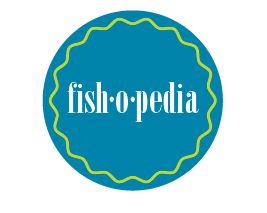 The Fish-o-pedia Pack is an education pack filled with materials to help teach students and other groups about Great Lakes fish. Each pack includes average size vinyl cutouts of twelve native and non-native Great Lakes fish. The pack also contains the Fish-o-Pedia cards – filled with facts and figures about each of the species and the 4th edition of The Life of the Lakes: a Guide to the Great Lakes Fishery (2019) Brandon C. Schroeder, Dan M. O’Keefe, and Shari L. Dann with Michigan Sea Grant.
The Fish-o-pedia Pack is an education pack filled with materials to help teach students and other groups about Great Lakes fish. Each pack includes average size vinyl cutouts of twelve native and non-native Great Lakes fish. The pack also contains the Fish-o-Pedia cards – filled with facts and figures about each of the species and the 4th edition of The Life of the Lakes: a Guide to the Great Lakes Fishery (2019) Brandon C. Schroeder, Dan M. O’Keefe, and Shari L. Dann with Michigan Sea Grant.
Fish-o-pedia Lesson Plans, from the Great Lakes Sea Grant Network
These lesson plans are currently under review by our curriculum experts. Please send an email to askwater@aqua.wisc.edu for more information.
- CSI: Fish – Students take on the role of an expert witness in a lake sturgeon poaching trial. Using a variety of data sets they identify the need to visually represent data in order to find trends and make predictions, and provide evidence based reasoning to explain their findings in a fish poaching case study.
- Fashion a Fish – Students design a fish while learning about adaptations to various habitats.
- Fish Habitat and Humans – A healthy environment supports a variety of native species. This is especially true for Great Lakes fish. Different species of fish require specific habitats, and loss or alteration of fish habitat can lead to population declines. This lesson explains some of the characteristics of healthy fish habitat and guides students in making their own field observations and scientific predictions. It will require 3 50 minute class periods.
- Fish Identification using a dichotomous key – Each family of fishes in the Great Lakes region has physical traits that set it apart from others, called distinguishing characteristics. These characteristics help fish survive in their environment. By observing and comparing these features, students learn that fish, like other living organisms, can be organized and classified into meaningful groups for identification and further study.
- Go Fish – An active lesson where students investigate components of habitats and their impact on the survival of populations.
- Great Lakes Fisheries and the Economy – Students participate in a role play investigating the economics value of fishing in the Great Lakes.
- What are the Characteristics of Some Great Lakes Fish? If you know how to construct a dichotomous key, you can make one that classifies real organisms, some fish in the Great Lakes. For this activity you will work in groups of 3 or 4. Your group will construct a key to identify some fish families and learn something about them. Lake Erie has a larger variety of fish life than any other Great Lake. Scientists believer this is because of the southern position of the lake and because it is shallow. Lake Erie has 138 species of fish. These species can be grouped into 27 families. All of the fish in a given family share certain characteristics.In this exercise you will learn how to use these characteristics to identify the 27 families.
- Who Can Harvest a Walleye? – The Great Lakes are an example of a natural community. In this community the small organisms (living things) outnumber the large organisms. The smaller organisms may be eaten by the larger ones.In this activity, students will count all the organisms of one kind, then count all the things they eat and all the things that eat them, creating pyramid of numbers that will also show who eats what.
The Fish-o-pedia Packs were created by Wisconsin Sea Grant with Center for Great Lakes Literacy funding from the Great Lakes Restoration Initiative.




